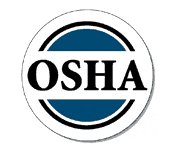Operators must be trained in the proper use of attachments because they alter the performance of the forklift. Attachments affect the truck’s performance by changing its center of gravity, visibility, and capacity. These are the federal OSHA regulations and descriptions of forklift attachment installation and use:
- Slipsheet attachments which avoid the use of pallets.

- Sideshifters shift the forks right and left.
- Container handlers designed to lift shipping containers.
- Carton clamps equipped with a pressure valve to squeeze the load.
- Cotton or pulp bale clamps that grab and hold bales.
- Paper roll handlers.
- Barrel clamps.
- Rotators that grab and rotate the load.
- Extending or telescoping forks such as in reach and turret trucks.
- Personnel platforms specially designed for lifting personnel.
Potential Hazards:
- Overloading. The weight of the attachment reduces the lifting capacity of the truck.
- Tipover and falling loads. The attachment increases the load center by moving the load further away from the balance or fulcrum point.
Requirements:
- Train operators in the fork and attachment adaptation, operation, and use limitations. 29 CFR 1910.178(l)(3)(i)(G)
- Retrain an operator if a new attachment is added to the forklift. Consult the operator’s manual for instructions on how to use the new equipment.
- Do not exceed the rated capacity of the forklift/attachment combination.
- Know the mechanical limitations of your forklift.
- Change capacity, operation, and maintenance instruction plates, tags, or decals when a forklift truck is equipped with an attachment.
- Treat an unloaded forklift with an attachment as partially loaded. [29 CFR 1910.178(o)(4)]
- Include attachments in a scheduled maintenance and inspection program. Tailor inspection steps to the attachment.
Browse through our FAQ’s to answer any other questions you may have.
